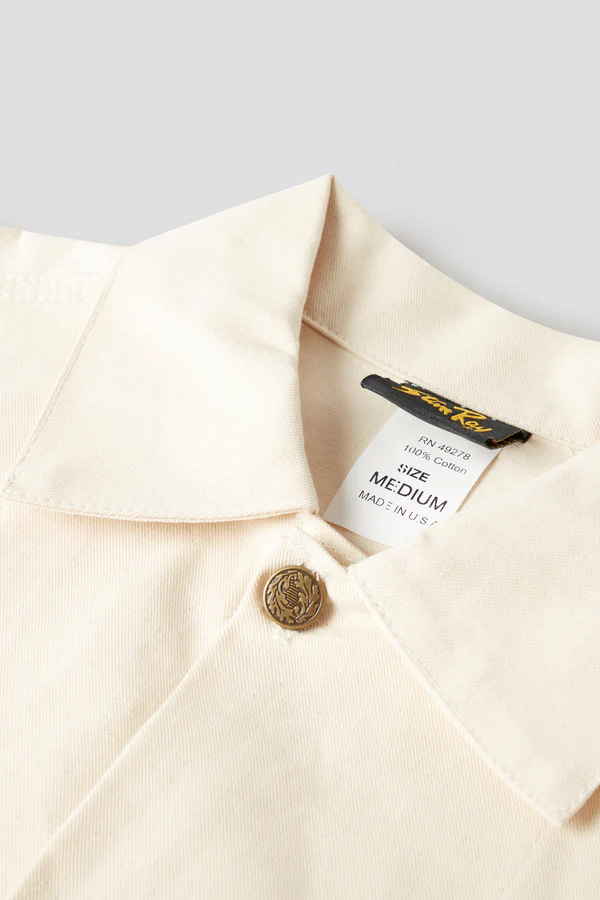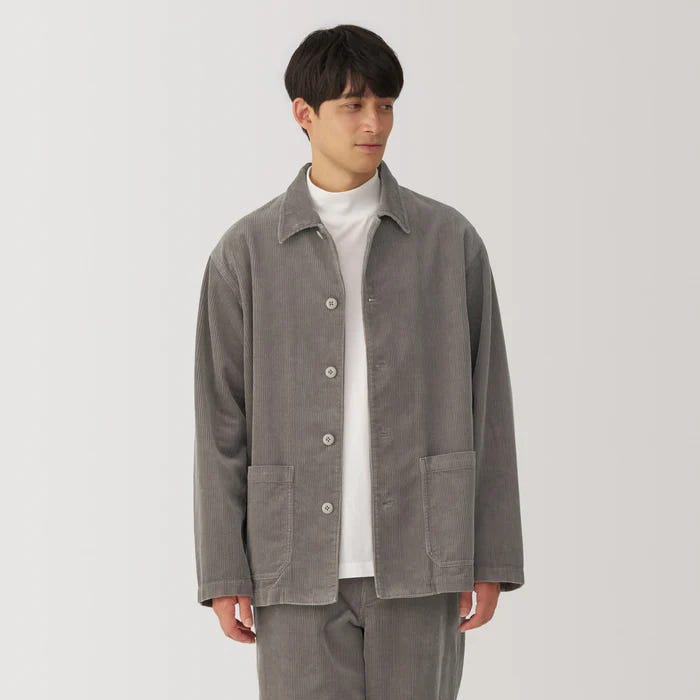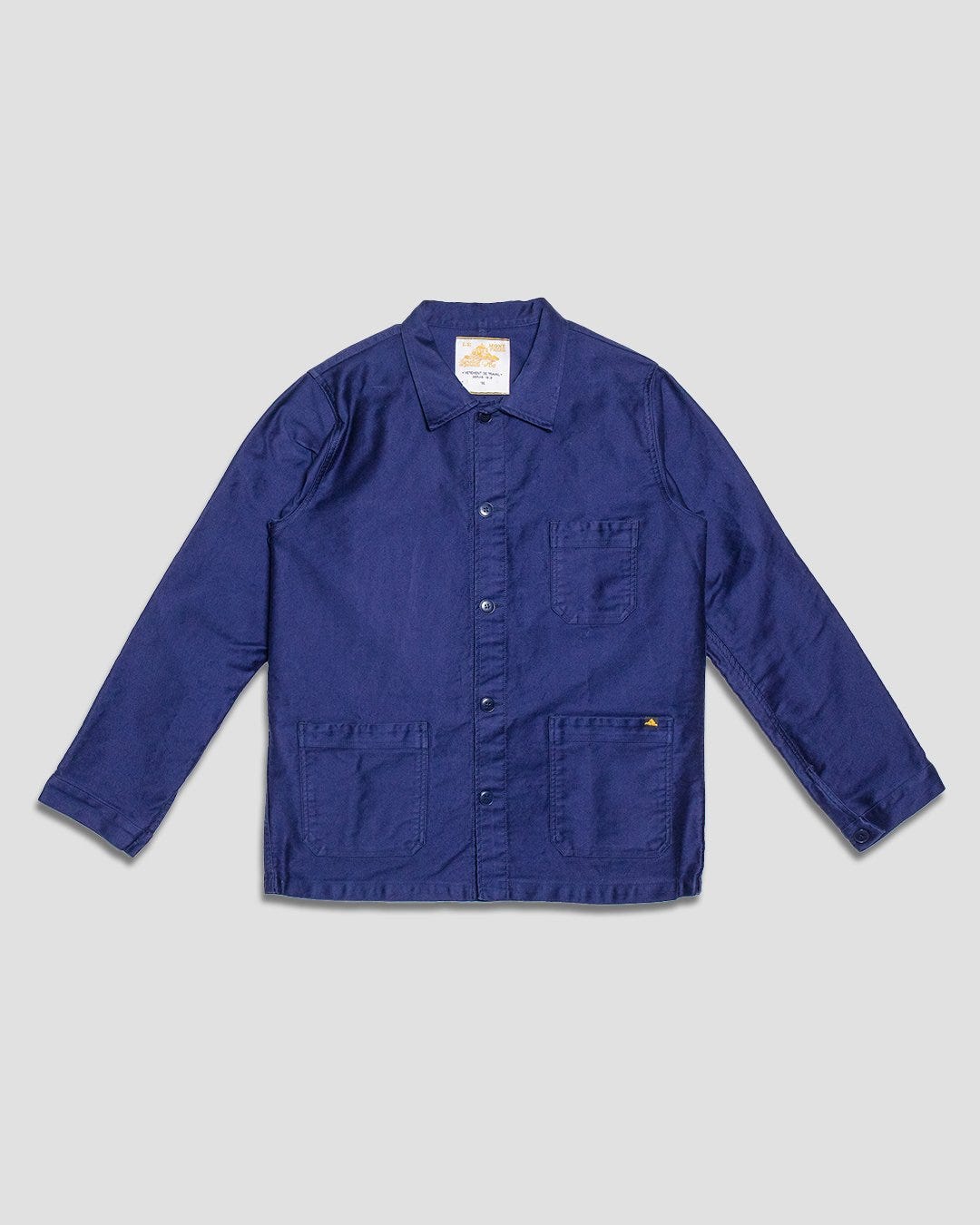You might be slightly confused by the short description of this week’s newsletter, but, like there always is for me, there is a story. During the pandemic, like many of us, I decided to try my hand at a few different hobbies; some of them stuck (like writing), and some of them didn’t. One of the hobbies that didn’t stick was sewing. The impetus to start sewing came when one of my favourite designers (Reese Cooper) released a DIY Chore Jacket kit. In the kit, you got the fabric, the sewing pattern, some appliqués to put on the jacket, and some thread. While I was quite excited, my family responded as I would have expected: sarcastically.
Their questions focused on the fact that I am not known as a “rugged” farmer or a blue-collar individual. While these statements about me could be considered objective facts, what I wasn’t able to convince them of was that it is purely a style of jacket. You don’t need to work with bails of hay to wear a chore jacket; in fact, going to pick up overpriced caffeinated beverages for your partner or finding the perfect knick-knack at a local store counts as a chore, and I will not justify wearing a chore coat any further.
Inspired by my friend Keelin, who asked for Chore Coat recommendations as the chilliness in the air takes a serious tone, I give you five Chore Coats that will have your family questioning whether you have left your careers to join a blue-collar trade or at least are cosplaying as one. This week, we will start with the best value and work our way up the price and luxury pyramid for this specific style.
Muji Corduroy Jacket
Clocking in at a smooth $99.99, this corduroy edition of a chore jacket is an ode to the classic, going virtually unchanged from the originals. Chore jackets were originally created to be a versatile option to wear over your typical work clothes when the temperatures dropped in the fall (or started to warm after winter), meaning that they needed to be oversized (to comfortably wear over your clothes), feature easily accessible pockets (for holding tools and why they sit so far down the torso), and buttons allowing for easy changes in just how open or closed it was as the temperatures changed throughout the day, while also being easy to do if you have heavy work gloves on.
This Muji variation features a corduroy made with a mix of cotton and Kapok. Kapok is a fibre harvested from Kapok nuts, which are an environmentally friendly crop which uses little water and has basically no need for pesticides, making it a great option for more environmentally conscious brands. As a fibre, it is lighter than most cotton, so this corduroy will not be quite as rough and tumble as others on the market; instead, it will trade toughness for a softer feel. For those who are using this coat as a fashion choice, this lightness (and softness from the get-go) might appeal to them versus having to break in a heavy workwear fabric.
Stan Ray Shop Jacket


While this opinion might be slightly contrarian, when wearing workwear as a fashion item, having something that will progressively become more visibly stained and worn in is a good thing and should not be a deterrent when choosing a colour. For this Stan Ray edition (which retails for a reasonable $135 CAD), they haven’t even dyed the original, so it truly does become an untainted canvas for your activities to tell the story.
From a functionality standpoint, this jacket is made to go the distance; with triple-needle stitching on main seams, bar-tack reinforced stress points and riveted buttons, it can handle working in a real shop, whether that be a mechanics’s shop, woodworking studio, or the less intense design studio where I imagine I’m most likely to wear a coat like this.
Additionally, if you consider yourself a DIY artist, this jacket would make an excellent medium for painting on it if you want to give it an artistic twist.
Rosa Rugosa Dufferin
Rosa Rugosa is a Canadian brand started by now-famed chef Matty Matheson and designer Ray Natale. The brand offers hardwearing staples built on the idea that quality is the main determinant of success for a concept. Additionally, the brand also ensures that the sizing is extremely inclusive, offering a wide range of sizes and designs that are inherently gender and body-shape-neutral
This chore coat is quite classic, although it adds a handy smaller pocket in one of the breast pockets for anyone who needs quick and easy access to a pen (like a chef who is running an expo line in the kitchen).
The fabric is what makes this jacket stand out, as it uses 10 oz duck canvas (or 10 oz hickory stripe for the colour scheme shown above) which for any of you who are fabric nerds will know that in a jacket, using a fabric that heavy will mean that it takes some time to break in, but once it does, it’ll feel like a second skin.
At $300 CAD, it isn’t the most price-sensitive, but you are paying for Made in Canada quality, the knowledge that you have one of the hardest-wearing jackets on the market, and, ultimately, a beautifully cut garment.
Nudie Jeans Twill Jacket
The fabric used for a chore jacket can vary wildly, as can the cut of the jacket. In the Stan Ray and the Rosa Rugosa options, you get something boxy and hyper-oversized. With this option from Nudie Jeans, you get something slightly more streamlined. While the aforementioned brands wanted to create a product that is just as technically proficient as what inspired them, it seems as though Nudie has chosen to take a contemporary view on the chore jacket and create one for how they are used in modern, metropolitan life. While the jacket is still oversized, you can see that it is cut closer to the body, cropped slightly and with less space in the shoulders; it is not meant for heavy labour and movement, instead being more at home strolling the cobbled streets of Gothenburg Sweden (where Nudie is from).
Regardless of its more white-collar intentions, the Nudie chore jacket still uses durable fabric. After all, Nudie is one of the best denim brands in the world and refuses to sacrifice the quality of its materials.
Coming in at a punchy $335, this option is pricey, but think of it as an investment, and the capital gains will come from people always thinking you are the best-dressed person in the room when you wear this jacket.
Le Mont St. Michel
The Genuine Chore Jacket
The Le Mont St. Michel Moleskine jacket is the originator of the chore jacket design. As a fan and respecter of sartorial history, it would be disrespectful of me not to give this jacket the flowers it deserves.
While modern iterations of the jackets have used heavier fabrics and provided contemporary cuts for a boxier aesthetic, the original still does it the best. The only downside of this jacket is the price, as Le Mont St. Michel is well aware that they can charge whatever they want, and their jackets will still sell out. Priced around the $400 mark, this is the most expensive on our list; in my mind, it is potentially the best value. Let me explain.
Made from super robust French cotton, the Moleskine jacket provides toughness and softness in a way that almost no other fabric can compete with. The Moleskine weave gives the cotton a linen-esque softness (and look), yet it sits heavy and reassuredly like a handmade quilt handed down through generations. For other heavy-duty fabrics, they take double or even triple the time to break in and find that softness you desire. With the Le Mont St. Michel Moleskine chore jacket, it will settle on your shoulders like you’ve worn it for decades after just a few wears while miraculously never losing that toughness that is required from a coat that was initially created to withstand back-breaking labour in factories and in the fields.
When you buy a coat like this, if you stay relatively the same size, you will be able to wear it for a lifetime, in fact, it’ll probably outlive you. This makes the $400 price tag relatively minuscule if you amortize it over 30 years (spread out the cost).
Value is subjective; what I value might not be valuable to you, and that is okay. All five of these jackets can create a lifelong love affair with the garment. The price and manufacturing techniques are just starting points, but the real love comes from wearing and experiencing things in the clothes you choose to wear.
With love, heavy fabrics, and optimism,
Benjamin.







